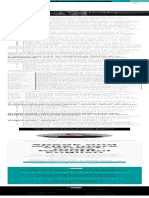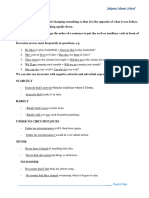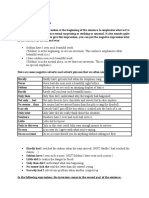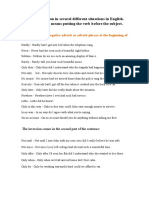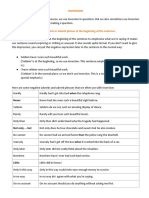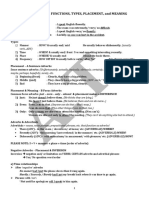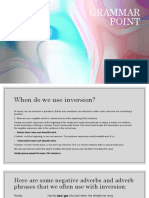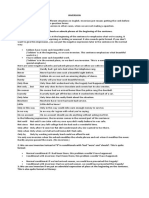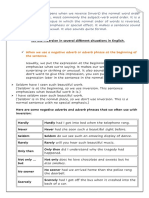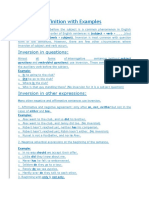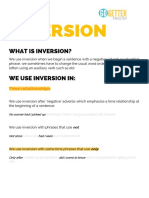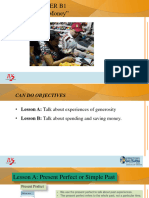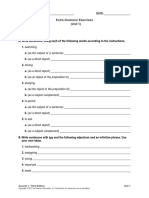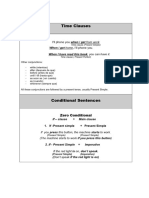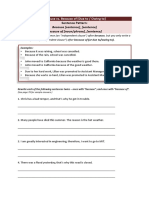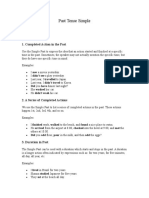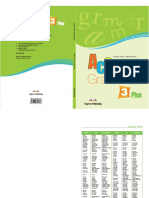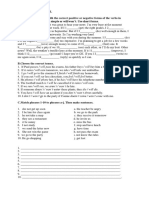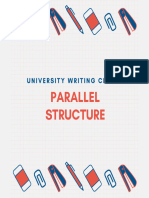0% found this document useful (0 votes)
9 views14 pagesInversion PDF
The document explains the concept of inversion in English, which involves placing the verb before the subject, primarily used in question forms. It provides examples of inversion across various tenses and discusses additional contexts where inversion is applicable, such as with negative adverbs and conditional sentences. The document also includes exercises for practicing inversion in sentences.
Uploaded by
Muhammad Rafiq TanjungCopyright
© © All Rights Reserved
We take content rights seriously. If you suspect this is your content, claim it here.
Available Formats
Download as PDF, TXT or read online on Scribd
0% found this document useful (0 votes)
9 views14 pagesInversion PDF
The document explains the concept of inversion in English, which involves placing the verb before the subject, primarily used in question forms. It provides examples of inversion across various tenses and discusses additional contexts where inversion is applicable, such as with negative adverbs and conditional sentences. The document also includes exercises for practicing inversion in sentences.
Uploaded by
Muhammad Rafiq TanjungCopyright
© © All Rights Reserved
We take content rights seriously. If you suspect this is your content, claim it here.
Available Formats
Download as PDF, TXT or read online on Scribd
/ 14


